Yesterday we made phenomenal progress on the simulation
centre. This facility is being
established so that a wide range of learners in the health profession can have
a place to rehearse technical skills, such as suturing, and complex team
dynamic, such as managing maternal hemorrhage, without practicing on
patients. There will be capacity
to teach nurses how to set up a table of surgical instruments, medical students
how to insert IV lines, and residents how to manage a patient after severe
trauma.
The centre is a free standing building with two bright,
well-ventilated rooms. We had an
important meeting yesterday with the Dean of the Faculty of Medicine, the new
Medical Director of the simulation centre, the Head of Anesthesia, and a staff
anesthesiologist. Peter, Jon,
Michelle and I wanted the place to look at good as possible before the
meeting. We got up early and
scurried around the centre unpacking the many bags of donated supplies Jon and
Michelle had brought from Halifax and all the equipment from the SAFE
Course. Then we ran to Nakumatt
(the local Superstore plus) where Michelle bought a refrigerator with money
donated by her soccer team for the sim centre. This will be essential for storing animal parts used in
teaching skills. After a quick
coffee at Bourbon Café we returned for the 10 AM meeting to a centre that
looked remarkably transformed already.
We have been waiting a long time for the official
appointment of Dr. Georges as the Medical Director of the Centre. This has delayed spending the money I
received from the simulation grant.
Therefore the space has not been painted and the cabinets have not been
built. During our meeting the Dean
got on his cell phone and in fifteen minutes we had a couple of workers taking
measurements for all the renovations.
After a fabulously successful first day on the simulation
program, Peter and I headed off to the market to load up on mangos, papayas,
pineapples, passion fruits and cheese (all the essentials for life). There was a lively cooking session with
four of us packing into our tiny kitchen.
My good friend, Steven, joined us for dinner and shared many of his
insights on justice and reconciliation.
He will be taking many of our team to visit the church in Nyamata on
Sunday.
 |
| Peter writing a welcome poster in Kinyarwanda |
 |
| Set up for skills and sim |
 |
| Michelle adjusting a mannequin |
 |
| Drs. Georges and Patrick after a very successful meeting |
Check out this time lapse of sim centre set up:
http://www.youtube.com/watch?v=-wjYjYo79Mk&feature=youtu.be


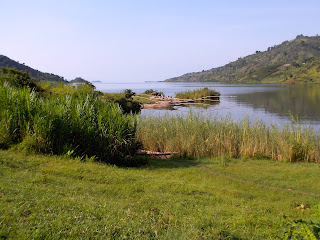


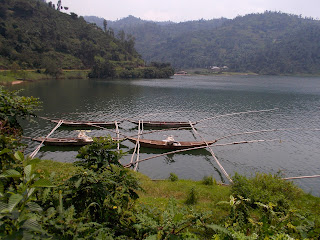


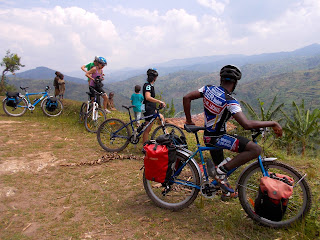
















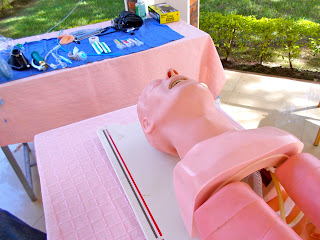


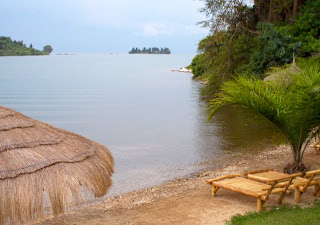




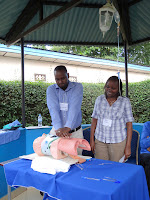.jpg)












